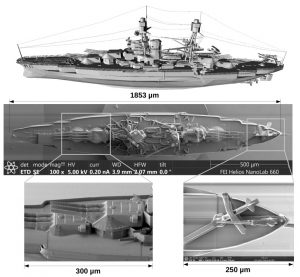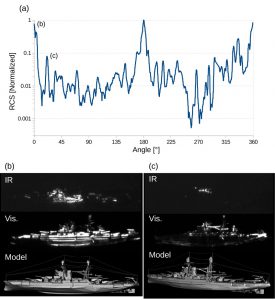Optical Emulator of Radiofrequency Systems
Abstract
The radar cross section of an object is an important electromagnetic property that is often measured in anechoic chambers. However, for very large and complex structures such as ships or sea and land clutters, this common approach is not practical. The use of computer simulations is also not viable since it would take many years of computational time to model and predict the radar characteristics of such large objects. We have now devised a new scaling technique to overcome these difficulties, and make accurate measurements of the radar cross section of large items. In this article we demonstrate that by reducing the scale of the model by a factor 100,000, and using near infrared wavelength, the radar cross section can be determined in a tabletop setup. The accuracy of the method has been compared to simulations, and an example of measurement has been done on a 1 mm highly detailed model of a ship. The advantages of this scaling approach is its versatility, and the possibility to perform fast, convenient, and inexpensive measurements.
We gladly acknowledge the support from the Office of Naval Research and the Naval Air Warfare for this project.


Pictures:


USS Arizona ship 3D printed at a micron level, and radar cross section measured from this model.
Publications:
- P.-A. Blanche et al., “A 300 THz tabletop radar range system with sub-micron distance accuracy“, Scientific Reports, (2018) 8:14443. Link
- P.-A. Blanche et al., “A 100,000 Scale Factor Radar Range“, Scientific Reports, 7, 17767, (2017). Link
Patent:
- P.-A. Blanche, “Transposition of a measurement of a radar cross-section from an RF-domain to an optical domain”, Patent US 10,782,401 09/22/2020. Link
